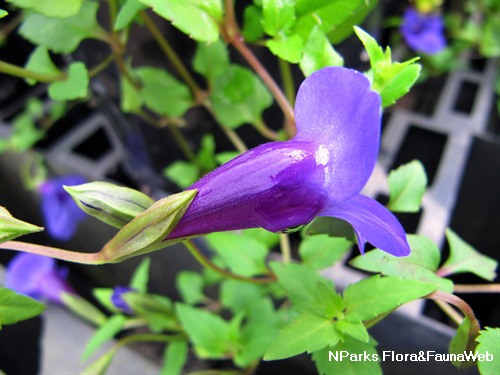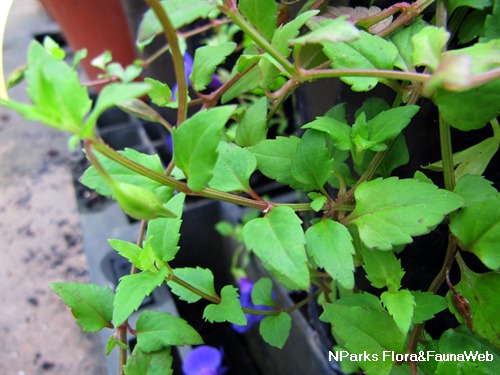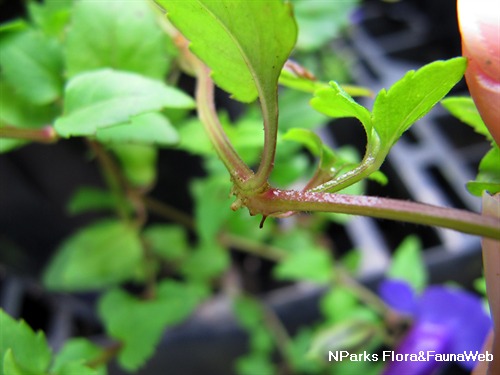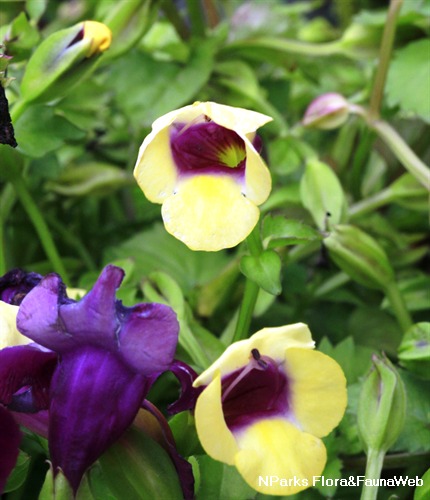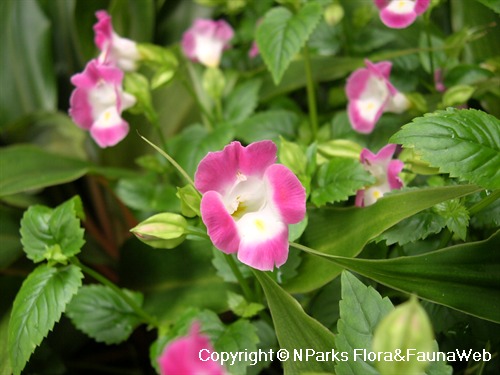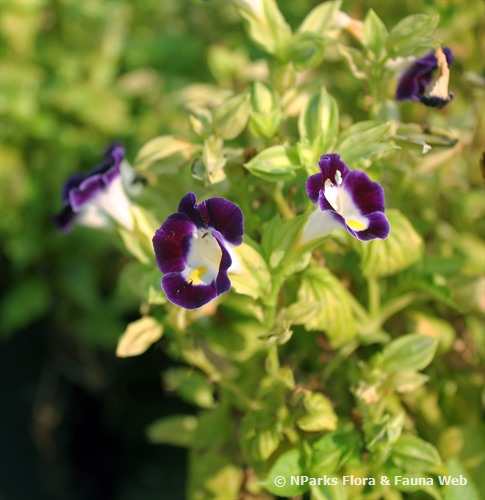
Back
Torenia concolor Lindl.
| Family Name: | Linderniaceae |
| Synonyms: | Torenia concolor T. Yamaz. var. formosana, Torenia radicans Vaniot, Torenia rubens Benth. ex Maxim. |
| Common Name: | 单色蝴蝶草 |
Name
Classifications and Characteristics
| Plant Division | Angiosperms (Flowering Seed Plants) (Dicotyledon) |
|---|---|
| Plant Growth Form | Creeper |
| Lifespan (in Singapore) | Perennial |
| Mode of Nutrition | Autotrophic |
Biogeography
| Native Distribution | China, Laos, Vietnam, Taiwan and Japan (Ryukyu Islands). |
|---|---|
| Native Habitat | Terrestrial |
| Local Conservation Status | Non-native (Horticultural / Cultivated Only) |
Description and Ethnobotany
| Growth Form | A creeping herbaceous plant. |
|---|---|
| Foliage | The leaves are simple and are triangular-ovate in shape and are arranged in opposite pairs along the stem. The leaf has a serrated to crenate edge. |
| Stems | The stems are quadrangular and root from the nodes. |
| Flowers | The flowers are borne in the axillary or terminal nodes as solitary flowers or in fascicles. The corolla is blue-purple, the lower lip is larger and lobed as compared to the upper lip. |
Landscaping Features
| Desirable Plant Features | Ornamental Flowers |
|---|---|
| Landscape Uses | Parks & Gardens, Flowerbed / Border, Suitable for Hanging Baskets |
Plant Care and Propagation
| Light Preference | Full Sun |
|---|---|
| Water Preference | Moderate Water |
| Plant Growth Rate | Moderate |
| Propagation Method | Stem Cutting (Herbaceous) |
Foliar
| Foliage Retention | Evergreen |
|---|---|
| Mature Foliage Colour(s) | Green |
| Foliar Type | Simple / Unifoliate |
| Foliar Arrangement Along Stem | Opposite |
| Foliar Attachment to Stem | Petiolate |
| Foliar Margin | Serrate / Toothed |
Floral (Angiosperm)
| Flower & Plant Sexuality | Bisexual Flowers |
| Flower Colour(s) | Purple |
|---|---|
| Flower Location | Axillary, Terminal |
| Flower Symmetry | Bilateral |
Image Repository
Others
| Master ID | 32014 |
|---|---|
| Species ID | 6416 |
| Flora Disclaimer | The information in this website has been compiled from reliable sources, such as reference works on medicinal plants. It is not a substitute for medical advice or treatment and NParks does not purport to provide any medical advice. Readers should always consult his/her physician before using or consuming a plant for medicinal purposes. |

